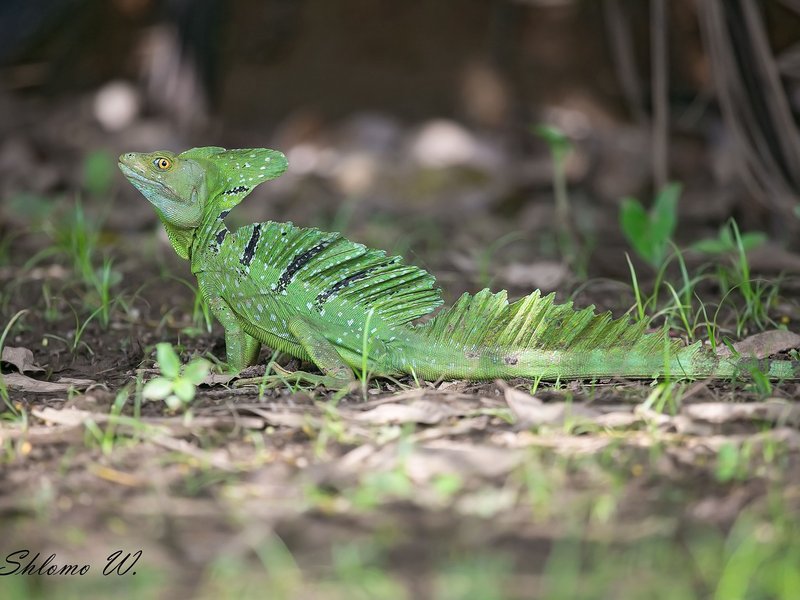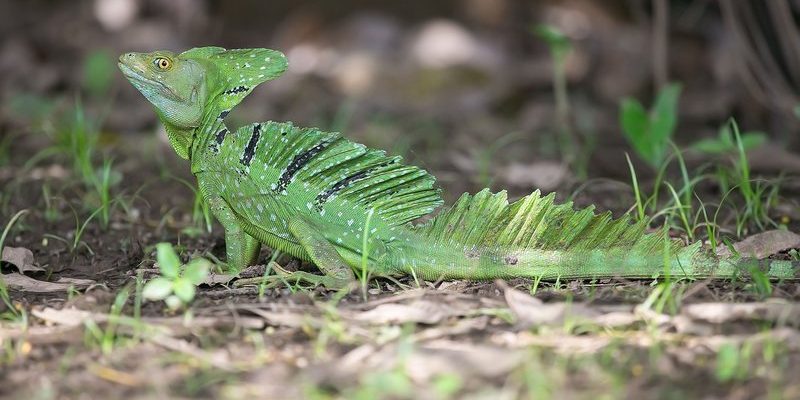
Basilisk lizards play a vital role in their ecosystems, especially in their natural habitats in Central and South America. They’re not just circus performers; they’re essential players in the game of survival and balance within their environments. So, let’s dive into the world of basilisk lizards and explore how they fit into the grand tapestry of nature.
What Are Basilisk Lizards?
Basilisk lizards belong to the family Iguanidae and are native to the tropical rainforests of Central and South America. There are several species, with the Green Basilisk being the most well-known. These lizards can grow up to 2.5 feet long, including their impressive tails. They have a distinctive crest along their back and a flattened body that helps them glide over the water. Honestly, when you see one, it’s hard not to be amazed by their beauty and agility.
One of the reasons basilisk lizards are so remarkable is their ability to run on water. They achieve this by rapidly moving their long legs and using surface tension to support their weight. This skill isn’t just for show; it helps them escape predators and reach safety when danger lurks nearby. Think of them as the sprinters of the reptile world, using their unique adaptations for survival.
Another interesting feature is their diet. These lizards are primarily herbivores, munching on leaves, flowers, and fruits. They’ll also eat insects and small animals when they can. Their varied diet allows them to thrive in different environments, making them adaptable to changes in their habitats.
Habitat and Distribution
Basilisk lizards are most commonly found in humid tropical rainforests, where they bask in the sun and hang out near rivers, streams, and ponds. They prefer areas with plenty of vegetation, which provides both food and shelter from predators. You might picture them lounging on a branch, soaking up the sun, and watching the world go by.
Their distribution stretches from southern Mexico down to parts of Brazil, often inhabiting areas that are relatively undisturbed. This specific choice of habitat is crucial for their survival. The dense foliage offers protection against birds of prey and other predators while providing ample food sources. If you’ve ever walked through a rainforest, you can imagine the vibrant ecosystem supporting countless species, basilisk lizards included.
The health of these habitats is essential for the survival of the basilisk lizard. Deforestation and habitat destruction pose significant threats. When their homes are chopped down or polluted, it can lead to a decline in their populations. Here’s the thing: protecting these habitats means protecting the intricate web of life they support, including the charming basilisk lizard.
The Basilisk Lizard’s Role in the Ecosystem
Basilisk lizards contribute significantly to their ecosystem. As herbivores, they help with seed dispersion. When they eat fruits and leaves, they also excrete seeds that can grow into new plants. This process is essential for maintaining the health and diversity of their habitats. Imagine them as tiny gardeners, nurturing the very environment they rely on.
Moreover, they serve as prey for various predators, including birds, snakes, and larger mammals. In this way, basilisk lizards are integral to the food chain. By being both predator and prey, they help maintain a balance in their ecosystem. If you think about it, every creature has its part to play in the circle of life, and basilisk lizards are no exception.
Interestingly, the presence of basilisk lizards can indicate the health of the environment. A thriving population suggests a healthy ecosystem, whereas a decline can signal underlying problems, such as pollution or habitat destruction. So, when scientists study these lizards, they’re not just looking at a single species; they’re gaining insights into the broader health of the ecosystem.
Adaptations and Survival Strategies
Basilisk lizards have developed several adaptations that help them survive in their natural habitats. One of their most famous traits is their ability to run on water. They achieve this through strong, elongated toes and a unique running technique that prevents them from sinking. This skill allows for quick escapes from predators and is a fantastic example of evolutionary adaptation.
In addition to their water-running abilities, basilisk lizards are also skilled climbers. They can often be seen perched on branches, where they can bask in the sun or hide from danger. Their impressive coloration helps them blend into the lush greenery of their surroundings, providing camouflage from predators. You might say they’re like the ninjas of the rainforest, using stealth and agility to their advantage.
Let’s not forget their social behavior, either. Male basilisk lizards often engage in displays of dominance, using their colorful crests and body language to assert their territory and attract mates. This behavior is not just about competition; it’s also about ensuring they can find partners to keep their species thriving.
Threats and Conservation Efforts
Unfortunately, basilisk lizards face several threats in the wild. Habitat loss due to deforestation is one of the most pressing issues. As humans continue to clear forests for agriculture, urban development, and other uses, these lizards lose their homes and food sources. This decline can devastate their populations, impacting the entire ecosystem.
Additionally, climate change poses a significant threat to their habitats. Changes in temperature and rainfall patterns can alter the delicate balance of the rainforest, affecting the food availability and breeding cycles of basilisk lizards. You might be wondering how we can help these creatures adapt to such rapid changes. Sustainable practices, like responsible farming and reforestation, are crucial in preserving their habitats.
Conservation efforts are underway to protect basilisk lizards and their habitats. Organizations work to restore damaged ecosystems, promote awareness, and support legislation that safeguards these unique reptiles. You can help too! Supporting conservation programs and being mindful of environmental practices can go a long way in ensuring that basilisk lizards continue to thrive in their natural habitats.
The basilisk lizard is more than just a fascinating creature of the rainforest; it’s a key player in maintaining the health of its ecosystem. From its ability to run on water to its role in seed dispersion, every aspect of the basilisk lizard’s life is interconnected with its environment. By understanding and appreciating these unique lizards, we can better support conservation efforts and help protect their rapidly disappearing habitats.
So, the next time you hear about a basilisk lizard or see one in a documentary, remember its vital role in nature. These lizards invite us to reflect on the intricate relationships within ecosystems and inspire us to take steps toward preserving their beauty for future generations. Together, we can ensure that these incredible creatures continue to thrive in the wild.

